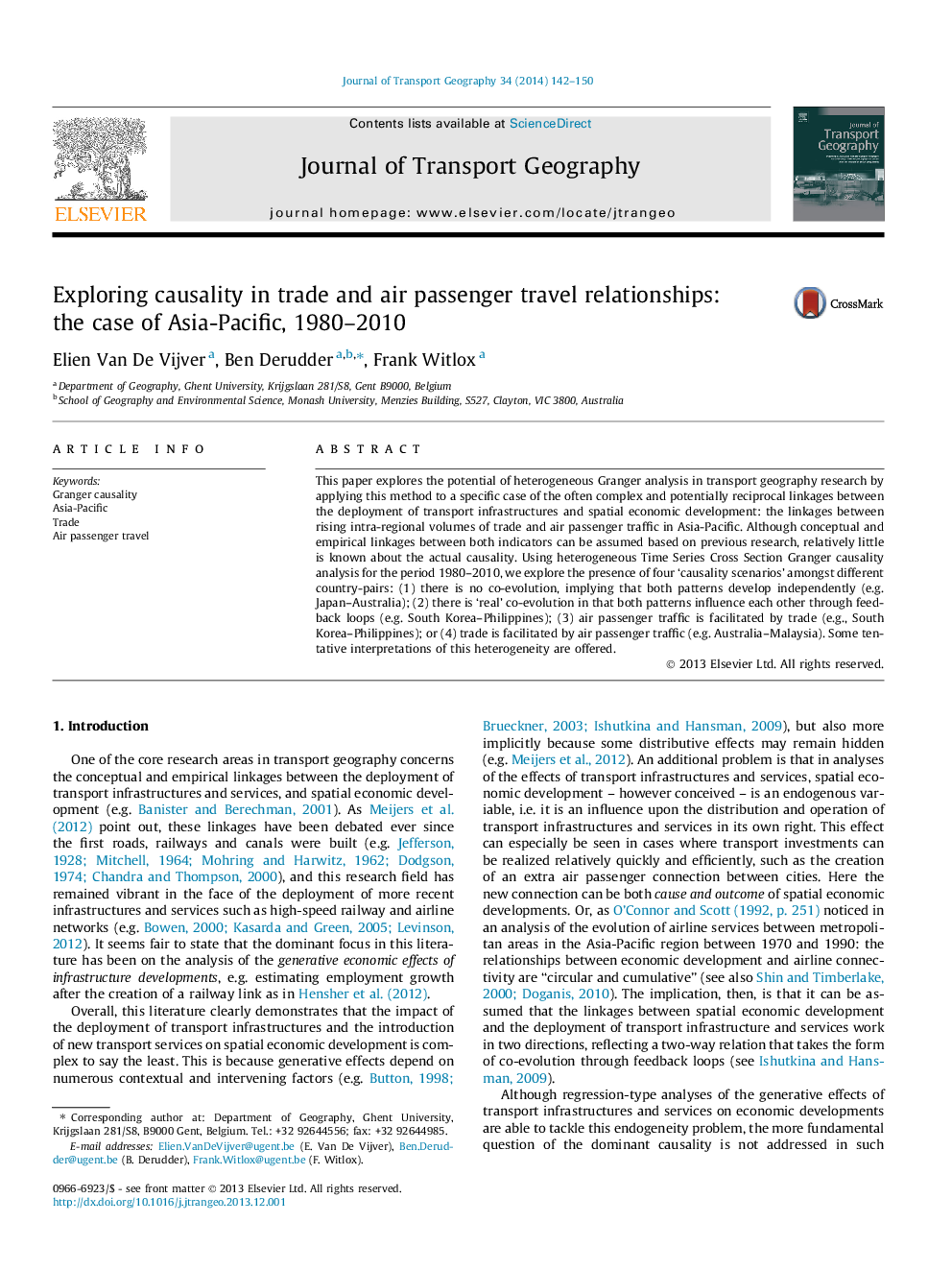| Article ID | Journal | Published Year | Pages | File Type |
|---|---|---|---|---|
| 7486261 | Journal of Transport Geography | 2014 | 9 Pages |
Abstract
This paper explores the potential of heterogeneous Granger analysis in transport geography research by applying this method to a specific case of the often complex and potentially reciprocal linkages between the deployment of transport infrastructures and spatial economic development: the linkages between rising intra-regional volumes of trade and air passenger traffic in Asia-Pacific. Although conceptual and empirical linkages between both indicators can be assumed based on previous research, relatively little is known about the actual causality. Using heterogeneous Time Series Cross Section Granger causality analysis for the period 1980-2010, we explore the presence of four 'causality scenarios' amongst different country-pairs: (1) there is no co-evolution, implying that both patterns develop independently (e.g. Japan-Australia); (2) there is 'real' co-evolution in that both patterns influence each other through feedback loops (e.g. South Korea-Philippines); (3) air passenger traffic is facilitated by trade (e.g., South Korea-Philippines); or (4) trade is facilitated by air passenger traffic (e.g. Australia-Malaysia). Some tentative interpretations of this heterogeneity are offered.
Keywords
Related Topics
Life Sciences
Environmental Science
Environmental Science (General)
Authors
Elien Van De Vijver, Ben Derudder, Frank Witlox,
